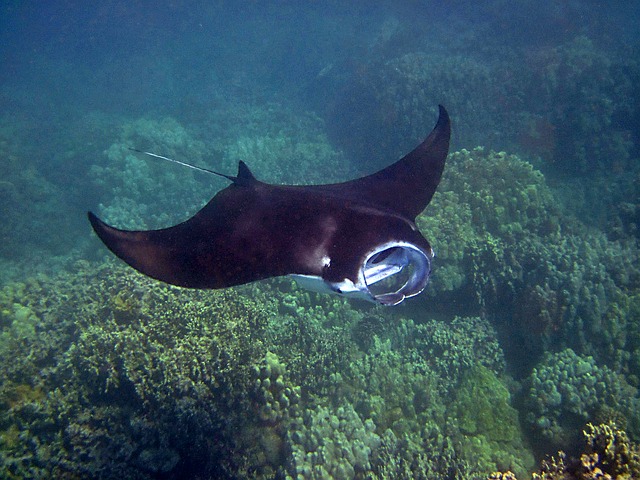Manta Ray Facts
Below are some of the facts about Manta Ray:
- The Manta Ray is a beautiful marine animal, which has a wide and flat body that spreads like a bird, and a long tail. They are large ray fishes with triangle shaped pectoral fins, cephalic fins of horn shape. The body is black and white colored.
- With a wide wingspan, it’s a huge sized sea animal. The wingspan may be as long as 20 feet, and even more, and they weigh up to 3000 pounds. Normally rays have a spine in their tail for defense mechanism. But the Manta ray does not have it.
- Manta rays are of two types. One is the giant Manta ray, and another is the Reef Manta.
- Manta ray eat food by filtering sea water. They direct the water through their cephalic fins towards their mouth, and the mouth filters the water for the smallest of preys.
- Manta rays live for a span of 30 to 50 years. They inhabit the waters of tropical and temperate zones.
- Manta rays are like normal fishes inside, just like the common fishes salmon and trout are. Their body appearance differs only.
- The manta ray prefers staying near the sea bed or ocean floor.
- The brain size of the Manta ray is larger than sharks and other rays, and also bigger compared to the body size of the organism. Being so huge, they are only predated by humans and sharks.
- Their main food is the planktons, and to filter the food and direct into their mouths their fin extensions have evolved to take the shape of horns. These horn like extensions are called cephalic lobes. Due to the horns they are also called Devil rays.
- If their tissues get damaged from an attack, then they can regenerate them.
- Manta rays are not a threat to humans, and they do not feed on fishes or other marine animals. They feed only on microscopic sea organisms and planktons, and are not aggressive and attacking. They are safe to be close to, and peaceful animals.
- Other rays have a venomous sting, which manta rays do not have. They are harmless and gentle animals.
- Their elegance in swimming have mesmerized many divers, who fondly named it as the sea bird.
- The population of Manta rays are vulnerable to reduction and getting endangered due to phenomenon like global warming, extreme fishing, and degradation of habitat.
- They are found mainly in the Atlantic Ocean, Pacific Ocean, and the Indian Ocean.
